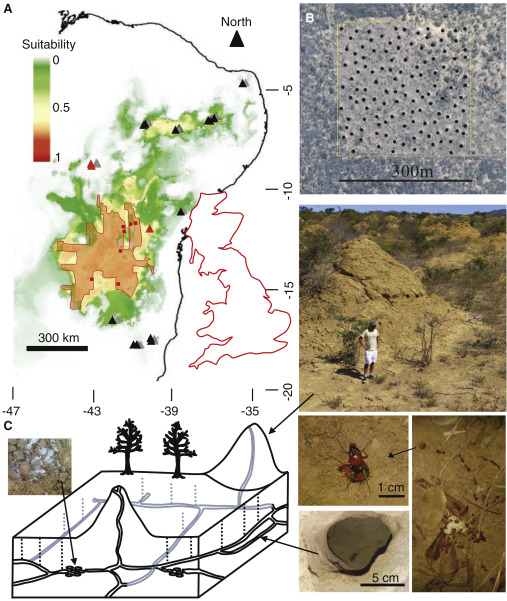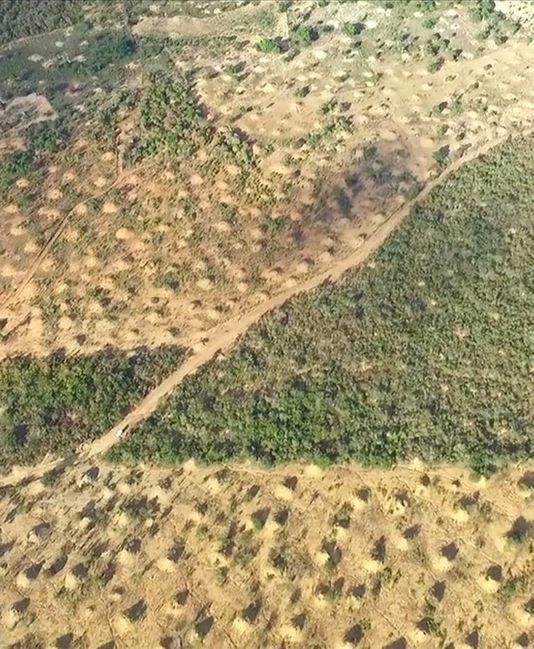A team of researchers have found a vast network consisting of more than 200 million regularly-spaced termite mounds in northeastern Brazil covering an area the size of Great Britain. According to the research, published in the journal Current Biology on November 19, 2018, the still-inhabited mounds are up to 4,000 years old and so tall they can be seen via satellite.
The cone-shaped mounds are not nests, said the scientists. Rather, they are the result of the termites‘ slow and steady excavation of a network of interconnected underground tunnels. The termites’ activities over thousands of years has resulted in huge quantities of soil deposited in approximately 200 million cone-shaped mounds, each about 8 feet (2.5 meters) tall and 30 feet (9 meters) across.
Roy Funch of Universidade Estadual de Feira de Santana in Brazil is a co-author of the study. Funch said in a statement:
This is apparently the world’s most extensive bioengineering effort by a single insect species. Perhaps most exciting of all – the mounds are extremely old – up to 4,000 years, similar to the ages of the pyramids.

The mounds are largely hidden from view in the fully deciduous, semi-arid, thorny-scrub caatinga forests unique to northeastern Brazil. They’d only really come into view by “outsiders,” including scientists, when some of the lands were cleared for pasture in recent decades.
Stephen Martin of the University of Salford in the U.K. is a co-author of the study. He said:
It’s incredible that, in this day and age, you can find an ‘unknown’ biological wonder of this sheer size and age still existing, with the occupants still present.
EarthSky lunar calendars are cool! They make great gifts. Order now. Going fast!

Soil samples collected from the centers of 11 mounds and dated indicated that the mounds were filled 690 to 3,820 years ago. That makes them about as old as the world’s oldest known termite mounds in Africa. Martin said:
These mounds were formed by a single termite species that excavated a massive network of tunnels to allow them to access dead leaves to eat safely and directly from the forest floor. The amount of soil excavated is over 10 cubic kilometers [2.4 cubic miles], equivalent to 4,000 great pyramids of Giza, and represents one of the biggest structures built by a single insect species.
Bottom line: Researchers have found a vast array of regularly-spaced, still-inhabited termite mounds in northeastern Brazil, covering an area the size of Great Britain, that they say is about 4,000 years old.
Source: A vast 4,000-year-old spatial pattern of termite mounds











